Iraq after Soleimani: What is the future for US troops?
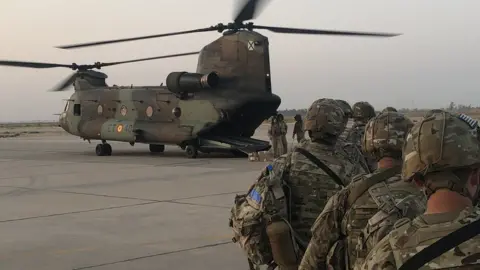 US army
US army"Incoming, Incoming!" The loudspeaker screeches out a warning of a rocket attack at Union III, the US-led coalition base in Iraq's capital, Baghdad.
The compound is in the Green Zone, an area built around what was once former Iraqi leader Saddam Hussein's palace.
A few seconds after the first alarm, we hear two loud explosions. Then another announcement, ordering everyone in the base to take cover.
Just across the road lies the US embassy, the likely target of the three Katyusha rockets.
After an hour, we are told it is safe enough to come out. One rocket fell into the nearby Tigris river, but two landed inside the embassy compound.
"This isn't the first and won't be the last," says Pari, a 42-year-old civilian, who lives and works at the base as a hairdresser to support her daughters back home in Kyrgyzstan.

She used to work at the US base in the Afghan capital, Kabul, but left because it was too dangerous.
Everyone told her she would have a calmer life in Baghdad, but two rockets hit the street near the embassy on her first night there.
Watershed moment
Since October 2019, more than 109 Katyusha rockets have been launched at locations housing US troops in Iraq.
The coalition says Iran-backed paramilitary groups are carrying out the attacks.
Then came the US killing on 3 January of Gen Qasem Soleimani, the head of Iran's elite Quds Force at Baghdad airport.
Iran's response, five days later, was a ballistic missile strike against US bases in Iraq.
These attacks prompted new security rules for all coalition bases housing US troops in Iraq.
Outside activities are now banned and anyone walking in the open has to wear protective gear from sunset until early morning.
During the coalition's fight against the Islamic State (IS) group, I went on several operations with the US army and travelled to their bases across Iraq.
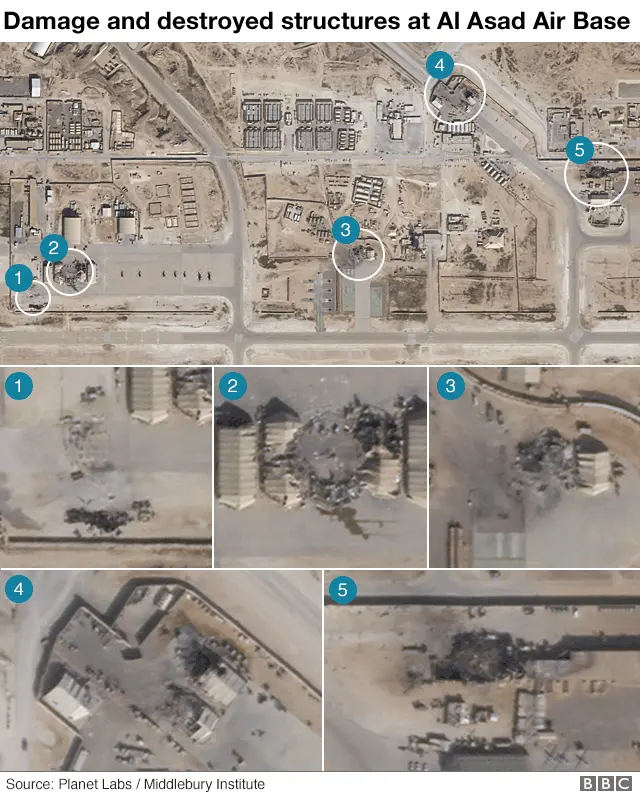

I was told it was unnecessary to wear body armour inside the compounds. It was safe, I was assured.
But the Union III base in Baghdad is far emptier than the last time I was here.
Many of the coalition forces, including Nato soldiers, have been relocated to Kuwait.
Officials tell me the soldiers will return when the threat level goes down.
Strained relations
But there are bigger and deeper developments being felt by US army officers in Iraq since the attack.
The Union III base is the main headquarters for Iraqi and coalition forces in their campaign against IS.
When I was last here, both the US and Iraqi officers were keen to show the media how their relationship was deepening on a professional and personal level.
Both sides were keen to appear on camera to talk about their mutual goal of defeating IS.
Now, coalition commanders are hesitant to go on the record. Recent developments have cast a long shadow over what was once "a great friendship".
The deputy head of a pro-Iran paramilitary force, Abu Mahdi al-Muhandis, was also killed in the US strike against Gen Soleimani.
Interestingly, he was in this very base in Baghdad's Green Zone a couple of days before his death.
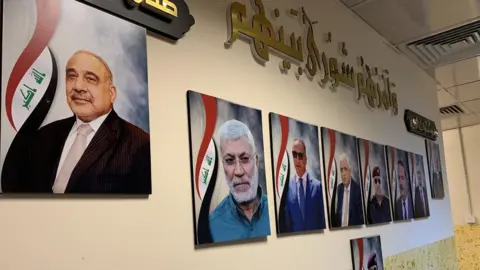
His Shia Muslim paramilitary group is supported by Iran, but is also an official part of the Iraqi security forces and has played a key role in the defeat of IS.
He was here to meet Iraqi army generals, the same commanders who are partners with the US in the battle against IS.
Muhandis's picture can be seen on the wall alongside other Iraqi military commanders in the same corridor that coalition officials would walk through each day if they wanted to see their Iraqi partners at the base.
In the dark
Two senior coalition officials in the Union III compound told me they only found out about the assassination when they checked their phones in the morning.
"If there is an operation that you don't need to know about, you wouldn't be told," a senior coalition official said on condition of anonymity.
"No matter if you have to live with its aftermath."
In fact, the night Soleimani and his convoy were hit, US drone operators working out of the Baghdad base thought at first that there had been a rocket attack on the airport's diplomatic centre where most of the coalition diplomats and intelligence officers are housed.
It had been targeted only a few days before the assassination.
When they saw the fire after the explosion, they assumed it was a drone strike as rockets would not cause that kind of blaze, but were unsure about who had carried it out.
 AFP
AFPThis happened only a few days after US forces in Iraq carried out air strikes on the headquarters of the Iranian-backed Kataib Hezbollah militia on both sides of the border with Syria; this was in response to rocket attacks on coalition bases and killed at least 25 members of this Iraqi Shia paramilitary group.
Their funeral turned into a big demonstration against the US and mourners attacked the US embassy in Baghdad. But the drone attack crossed all the red lines, according to Shia paramilitary groups.
Angry with moves that had nothing to do with the US mission in Iraq to "defeat IS", pro-Iran paramilitary groups and politicians want US troops to leave Iraq immediately.
But coalition forces hope to start what they say will be the final stages of operations against IS with their Iraqi allies soon.
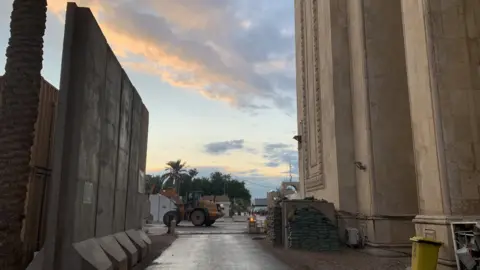
It is this uncertainty that makes commanders on both sides reluctant to talk to the media about it, especially when politicians might contradict them the next day.
"Our team is looking forward to and believes in the mission. We believe in the Iraqi people, and we believe in the Iraqi security forces," a senior coalition official who has been deployed to Iraq multiple times during the campaign against IS and has worked closely with the same top Iraqi commanders tells me.
He used to see his Iraqi counterpart almost every day to drink tea together, but since the attack, their relationship has become more formal.
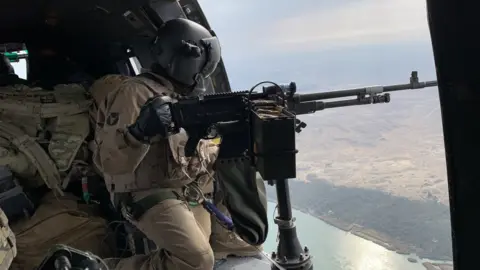
The Iraqi security forces feel they are trapped in a political crisis between Iran and the US.
"This is not our problem," says Maj Gen Tahseen al-Khafaji, Iraq's joint operation command spokesman. "This is not even a military problem. There is a crisis between Iran and the US and they have put us in the middle.
"My message is for both these countries: Don't bring your issue here."
The Iraqi military says the pause in coalition support in the wake of Gen Soleimani's death has left them with no other option but to continue the operation against IS themselves.
"For the first time, we have flown our F-16 jets to conduct air strikes on IS," says Gen Khafaji.
"It is right that we can fight alone, but we are still looking forward to working with the coalition if political issues allow."
For the moment, everything hangs in the balance. The nature of the threats US forces face have been shifted from IS to something completely different.
US airman Alejandro Pena, who was despatched to Iraq only two months ago, has the final word on this.
"When we were deployed here, I thought I was coming to fight IS, but after a couple of months I saw that 'ah no! There are others as well.'"
